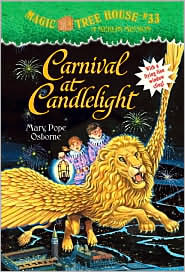Please click here to view my Cinderella I Poem for two voices.
The two versions of Cinderella I chose to read about were Moss Gown written by William H. Hooks and illustrated by Donald Carrick and Raisel's Riddle written by Erica Silverman and illustrated by Susan Gaber. The first book is about a young woman who lives on a traditional Southern Plantation. Her father is growing old and wishes to make plans for his daughters for their future. He says that the amount to which they each prove their love for him will determine the amount of his land they will inherit. The author makes it obvious to the reader that Moss Gown loves her father the most and the feeling is mutual, but her father does not understand her replay of "more than meat loves salt" and he gives the plantation to his two eldest daughters who subsequently throw Moss Gown out of the house (and later on, also their father). Moss Gown is forced to walk through the woods on her way to find a place to work. There she finds a "green-eyed witch woman" weaving a magical gown of moss that will turn gossamer each evening she wears it "as long as the Morning Star does shine." Moss Gown finds a job working in the kitchen of the house of the Young Master whom she subsequently falls in love with at a Southern Ball. Eventually, her father finds her and she is able to explain (through a meat-filled meal without salt) just how important salt is to meat. The second book is about a young Jewish girl who is very close to her grandfather and learns much from him during his life. After his passing, she has little inheritance and goes home-to-home in search of work, finally arriving at a home where the reluctant cook offers her a job working in the kitchen; she accepts. Eventually, she falls in love with the rabbi's son when she meets him at a traditional Jewish party where all the invitees dress as famous people who surrounded Queen Esther during her lifetime. (Raisel is dressed as the queen in the story.) She tells this young man a riddle one night that her grandfather once told her about learning and the rabbi's son is so intrigued by it (and her) that he searches for her after the party.
About writing I Poems:
I did a project earlier in the semester about Paul Fleischman, who has written several poems for two voices as well as poems for four and many voices and came to really like this idea through my research of his work. I believe that the poems for two voices are a wonderful idea and are very creative! If this were to be implemented into a upper-elementary classroom, it would be necessary to have a pre-designed format for them as we had on this assignment so the students could more easily focus their attention on the poem.Personally, I really enjoyed writing my I poem for two voices. It was like a Venn Diagram in that it helped me see many of the similarities and differences between the two stories as well as compare it to the traditional Cinderella story. I think that this writing assignment could easily be done in a fourth or fifth grade classroom instead of a traditional Venn Diagram as perhaps a more interesting and upper-level way to compare and contrast literature.
The process of writing a poem for two voices requires a good amount of effort and a careful reading and comprehension of the text as the writer mush return to the works often throughout the process in order to compare and contrast the works for their poem. It might be helpful for students to make a chart or sketch their own Venn Diagram as a beginning point for the writing of their poem for two voices.
I learned much about the Jewish tradition through my research as well as a little more about the South. I have read Gone With the Wind, which does chronicle some of the truth of the South around the time of the Civil War, as well as many of the exaggerations of the time and took a class on Southern Literature and Culture, so I was already fairly well-versed in this topic before embarking upon the reading of this work. However, I did come across several interesting web sites that told of many Southern sayings and gave a humours look at the South and the ways we do certain things, some of which were actually helpful in my writing of the I poem. This sight was especially funny and interesting to me and did have links to very good information. About Judaism I learned about the traditional items Jews likely have in their homes, such as Havdalahs (braided wax candles) and Mezuzots (used as a way to keep evil spirits out) and the significance of this party and the re-enactments within to the Jewish culture. In addition, I learned about the Jewish Talmud, which is a collection of Jewish people’s laws and traditions, and contains the debates, humor, and wisdom of the Jewish people.









